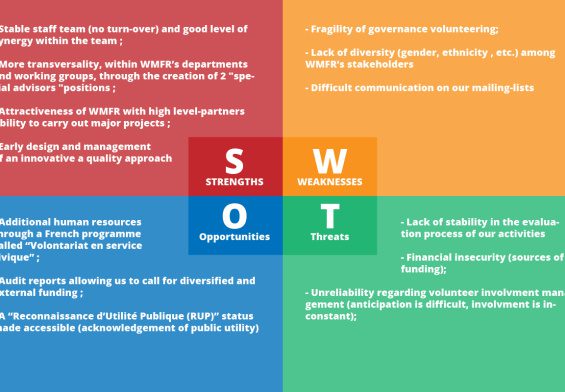
Table of Contents
How to Start a Finance Blog and Monetize It
How to Start a Finance Blog and Monetize It: Starting a finance blog can be one of the most rewarding and profitable online ventures — especially if you’re passionate about personal finance, investing, saving money, or helping others build wealth. With more people turning to the internet for financial guidance, there has never been a better time to build a trusted platform that educates, inspires, and earns income.
Whether you’re a financial professional or someone who has learned money lessons through personal experience, you can share your insights and grow a successful blog that generates consistent traffic and revenue. This guide will walk you through everything you need to know about how to start a finance blog and monetize it — from picking a niche to earning your first dollar.

1. Understanding the Power of a Finance Blog
Before diving into the technical steps, it’s important to understand why finance blogs are such powerful tools. Money affects everyone — whether it’s budgeting, paying off debt, saving for retirement, or learning to invest. People are constantly searching for trustworthy advice, step-by-step guides, and real-life stories that help them make better financial decisions.
A finance blog gives you the opportunity to:
- Build authority as a financial expert or enthusiast.
- Help readers improve their financial well-being.
- Create multiple income streams through ads, affiliate marketing, and products.
- Enjoy the flexibility of running an online business from anywhere.
If done right, your finance blog can become both a platform for positive change and a source of passive income.
2. Choosing Your Finance Niche
Finance is a broad field. To stand out, you need to choose a specific niche that allows you to target a particular audience. Picking a niche helps you focus your content, attract loyal readers, and compete effectively in search engines.
Some popular and profitable finance blog niches include:
- Personal Finance: Budgeting, saving, and managing money for everyday life.
- Investing: Stock market, real estate, ETFs, and retirement investing.
- Financial Independence & FIRE: Achieving financial freedom and early retirement.
- Debt Management: Paying off loans and improving credit scores.
- Side Hustles & Passive Income: Creative ways to earn extra money online or offline.
- Small Business Finance: Helping entrepreneurs manage business finances and taxes.
- Cryptocurrency & Blockchain: Understanding crypto trading and blockchain innovation.
- Frugal Living: Saving money through minimalism and smart spending.
Pick a niche that aligns with your interests, expertise, and the needs of your audience. Passion and authenticity matter — people can tell when you genuinely care about what you write.

3. Choosing a Name and Setting Up Your Blog
Once you have a niche, it’s time to build your finance blog. The setup process includes choosing a domain, selecting a platform, and customizing your site.
Step 1: Choose a Domain Name
Your domain name is your blog’s address on the web — for example, moneywisejourney.com or financialfreedomguide.com. Choose a name that is:
- Short, memorable, and easy to spell.
- Related to your finance niche.
- Professional and brandable.
You can use your personal name if you want to build a personal brand (like JohnDoeFinance.com).
Step 2: Pick a Blogging Platform
The most popular choice is WordPress.org because it’s flexible, scalable, and SEO-friendly. It gives you complete control over your content and monetization options.
Alternatively, platforms like Wix, Squarespace, or Medium are available, but they offer less customization for monetization.
Step 3: Get Hosting
A reliable web hosting provider ensures your site loads fast and stays online. Look for one that offers good performance, security, and customer support.
Step 4: Design Your Blog
Choose a clean and modern theme. Your readers should find it easy to navigate, read, and share your posts. Use professional colors, readable fonts, and financial imagery that conveys trust and credibility.
4. Creating High-Quality, Helpful Content
Your content is the heart of your finance blog. To build an engaged audience and attract organic traffic, focus on creating valuable, actionable, and trustworthy articles.
Types of Finance Blog Content That Perform Well
- How-to Guides: Step-by-step instructions (e.g., How to Create a Budget That Works).
- Listicles: Resource-style posts (e.g., 10 Best Budgeting Apps for 2025).
- Educational Posts: Explain financial concepts in simple language.
- Case Studies: Real-life success stories and examples.
- Reviews and Comparisons: Compare tools, accounts, or investment options.
- Opinion Pieces: Share your take on financial trends or market changes.
Tips for Writing Great Content
- Use clear, conversational language.
- Add real-life examples to make financial topics relatable.
- Include visuals, infographics, or charts to simplify complex ideas.
- Optimize for SEO with relevant keywords in headings and throughout the article.
- Update older content to keep it fresh and relevant.
The goal is to educate readers, solve their problems, and keep them coming back for more.
5. Building Trust and Authority
Finance is a sensitive topic. Readers will only take your advice seriously if they trust you. Establishing authority requires consistency, transparency, and credibility.
Here’s how to build that trust:
- Be transparent about your background, qualifications, and opinions.
- Disclose affiliations or sponsored content clearly.
- Back up claims with data, statistics, or expert references.
- Engage with your readers by replying to comments and emails.
- Share your personal experiences — people relate more to real stories.
You don’t have to be a certified financial advisor to start a finance blog, but integrity and accuracy should always be top priorities.

6. Promoting Your Finance Blog
Even the best content won’t reach people unless you promote it effectively. Building traffic takes time, but a solid promotion strategy can accelerate growth.
Proven Blog Promotion Techniques
- Search Engine Optimization (SEO): Research finance-related keywords, write optimized content, and focus on quality backlinks.
- Social Media: Share your posts on LinkedIn, Facebook, Twitter, and Instagram. Join finance-related groups and communities.
- Email Marketing: Offer a freebie like a budgeting template or investment guide in exchange for email signups. Send newsletters regularly.
- Guest Posting: Write for other finance sites to gain visibility and backlinks.
- Networking: Connect with other finance bloggers and influencers to collaborate or exchange ideas.
Consistency is key — publishing great content and sharing it regularly will grow your audience over time.
7. Monetizing Your Finance Blog
Once you’ve built a steady stream of traffic and trust, it’s time to turn your blog into an income-generating asset. There are several proven ways to monetize a finance blog.
1. Affiliate Marketing
Recommend products or services (like investment platforms, budgeting apps, or credit cards) and earn a commission when someone signs up through your link. Make sure to promote only those you truly believe in — authenticity builds long-term trust.
2. Display Ads
You can earn passive income by placing ads on your site using ad networks like Google AdSense or Mediavine. As your traffic grows, ad revenue becomes a consistent source of income.
3. Sponsored Posts
Brands often pay finance bloggers to review their products or write promotional content. Always disclose sponsored content to maintain transparency.
4. Sell Digital Products
Create and sell financial tools such as budgeting templates, eBooks, or online courses. These products generate passive income and establish you as an expert in your field.
5. Offer Consulting or Coaching
If you’re a financial planner or have strong expertise, you can offer one-on-one consultations, financial coaching sessions, or personalized budgeting plans.
6. Create a Membership or Subscription
You can build a members-only area on your site that offers exclusive resources, live webinars, or community discussions for a monthly fee.
7. Build and Sell an Email List
As your email list grows, it becomes a valuable asset. You can use it to promote affiliate products, digital courses, or even your own services.
The key is diversification. Don’t rely on one income source — combine several to create a stable and scalable income stream.
8. Legal and Ethical Considerations
Finance blogging comes with responsibility. Always be ethical and compliant with regulations.
- Disclose Affiliate Relationships: Always mention when a post contains affiliate links.
- Provide Accurate Information: Avoid misleading claims or get-rich-quick schemes.
- Use Disclaimers: Remind readers that your content is educational and not personalized financial advice.
- Comply with Privacy Laws: Use a privacy policy if you collect emails or data from users.
Maintaining professionalism and integrity not only protects your readers but also strengthens your reputation as a trusted source.
9. Tracking Your Blog’s Performance
Once your blog is live and running, it’s crucial to track performance. Use analytics to understand what’s working and what’s not.
Key metrics to monitor include:
- Website traffic (total visits, page views).
- Bounce rate and time on page.
- Top-performing keywords.
- Email subscribers and open rates.
- Revenue from different income streams.
Tools like Google Analytics and Google Search Console can help you monitor and refine your strategy for better results.
10. Scaling and Growing Your Finance Blog
As your finance blog gains traction, think long-term. Scaling means building systems that grow your blog’s reach and profitability without adding excessive workload.
Here’s how to scale efficiently:
- Hire freelance writers or editors to expand your content output.
- Automate your email marketing and social media posts.
- Launch digital products and courses to increase passive income.
- Build partnerships with other finance creators.
- Invest in SEO and content marketing to grow organic reach.
Remember, growth takes time. Stay consistent, focus on delivering value, and your audience — and income — will follow.
11. Maintaining Your Motivation
Blogging about finance isn’t a get-rich-quick path. It requires patience, persistence, and a genuine desire to help others. You may face slow growth in the beginning, but every post you write builds momentum.
Celebrate small wins — your first 100 visitors, your first affiliate sale, your first subscriber. These milestones will motivate you to keep going. Over time, you’ll not only create an income source but also a legacy of financial education that benefits thousands.
Conclusion: Turning Passion into Profit
Starting a finance blog and monetizing it successfully is about combining passion, purpose, and persistence. When you educate and empower others to manage their money better, you create meaningful change — and in return, you build an online business that rewards you financially and personally.
Your journey may start small, but every article you write, every reader you help, and every connection you make will contribute to your success. Focus on providing value, staying consistent, and continuously learning. Over time, your finance blog can become not just a source of income — but a platform for impact and independence.
Also visit:-
10 Simple Ways to Bring Romance Back into Your Marriage
FAQs on How to Start a Finance Blog and Monetize It
General Questions About Finance Blogging
- What is a finance blog?
A finance blog is an online platform where writers share advice, strategies, and tips on money management, investing, budgeting, saving, and building wealth. - Why should I start a finance blog?
Starting a finance blog allows you to share your knowledge, build authority, and earn money through various monetization methods while helping people improve their financial lives. - Do I need a finance degree to start a finance blog?
No, you don’t need a finance degree. You just need a strong understanding of financial topics and the ability to explain them clearly and honestly. - Is finance blogging profitable?
Yes. Many finance bloggers earn income through affiliate marketing, ads, sponsored content, and selling digital products or courses. - How long does it take to make money from a finance blog?
It typically takes 6 to 12 months to start earning, depending on your consistency, SEO strategy, and content quality.
Getting Started
- What are the first steps to start a finance blog?
Choose a niche, register a domain name, set up web hosting, install a blogging platform like WordPress, and start publishing high-quality content. - What is the best niche for a finance blog?
The best niche depends on your interest and expertise. Popular ones include personal finance, investing, budgeting, and financial independence. - How do I choose a name for my finance blog?
Pick a name that’s short, memorable, and reflects your niche, such as “SmartMoneyJourney” or “BudgetBoss”. - Which platform is best for finance blogging?
WordPress.org is the most recommended platform because it’s flexible, customizable, and SEO-friendly. - Do I need to invest money to start a finance blog?
Yes, you’ll need a small budget for a domain, hosting, and possibly premium themes or plugins.
Content Creation
- What kind of content should I post on a finance blog?
Write informative articles, how-to guides, case studies, product reviews, and listicles that solve readers’ financial problems. - How often should I post on my finance blog?
Aim to post at least once a week. Consistency is key to building trust and improving SEO rankings. - How do I find ideas for finance blog topics?
Research popular finance keywords, check online forums, analyze competitors, and write about trending financial topics. - Should I focus on long-form or short-form content?
Long-form content (1,500+ words) usually performs better for SEO and provides more in-depth value to readers. - Can I use AI to help write finance blogs?
Yes, but you should always fact-check and edit AI-generated content to maintain accuracy and authenticity.
Building Traffic
- How can I increase traffic to my finance blog?
Use SEO strategies, promote content on social media, build backlinks, and engage with readers through email marketing. - What are the best SEO practices for finance blogs?
Focus on keyword optimization, meta descriptions, proper headings, fast-loading pages, and high-quality backlinks. - Do finance blogs do well on social media?
Yes, finance blogs perform well on platforms like LinkedIn, Instagram, and Pinterest, especially with visual content like infographics. - How important is keyword research for finance blogging?
Extremely important — keyword research helps you target what people are actually searching for and improves your search engine visibility. - Can guest posting help grow my finance blog?
Yes. Guest posting on reputable sites increases traffic, builds backlinks, and establishes authority.
Monetization Strategies
- How can I monetize my finance blog?
Common methods include affiliate marketing, display ads, sponsored posts, digital products, and consulting services. - What is affiliate marketing for finance blogs?
It’s when you promote financial products like credit cards, apps, or investment platforms and earn a commission on sales or sign-ups. - When should I start monetizing my blog?
You can start once you have consistent traffic, high-quality content, and a loyal audience base. - How do ads make money on finance blogs?
Ad networks like Google AdSense or Mediavine display ads on your blog, and you earn based on views or clicks. - Can I make passive income from a finance blog?
Yes, through ads, affiliate links, and automated digital product sales. - What kind of digital products can I sell?
You can sell eBooks, budgeting templates, online courses, or financial planning tools. - Is it possible to earn full-time income from a finance blog?
Absolutely. With time and the right monetization mix, many finance bloggers earn a sustainable full-time income. - How much can I realistically earn from a finance blog?
Earnings vary widely, from a few hundred dollars per month to six figures annually, depending on traffic and monetization methods. - Do I need traffic to make money from a finance blog?
Yes, consistent traffic is necessary for monetization — the more visitors you have, the higher your earning potential. - What are the biggest monetization mistakes finance bloggers make?
Common mistakes include overusing affiliate links, neglecting SEO, or promoting products they don’t believe in.
Legal and Ethical Aspects
- Do I need to disclose affiliate links?
Yes, always disclose affiliate links to maintain transparency and comply with FTC regulations. - Should I include a disclaimer on my finance blog?
Yes. You should clarify that your content is for informational purposes and not professional financial advice. - Do I need a privacy policy for my finance blog?
If you collect emails or use analytics, you’re legally required to include a privacy policy. - Can I give financial advice on my blog?
You can share general financial information but avoid giving personalized advice unless you’re a licensed advisor. - What ethical guidelines should finance bloggers follow?
Always provide accurate, unbiased information, disclose sponsorships, and avoid promoting harmful or misleading products.
Growing and Scaling Your Blog
- How can I grow my finance blog audience faster?
Use SEO, guest posts, collaborations, and consistent publishing to attract and retain readers. - Should I build an email list for my finance blog?
Yes. An email list helps you engage directly with readers, promote products, and drive traffic to new posts. - How do I keep readers engaged on my finance blog?
Encourage comments, offer free resources, and write in an approachable, relatable tone. - What tools can help me manage my finance blog efficiently?
Use tools like Google Analytics, Grammarly, Canva, and WordPress plugins for SEO and performance. - What’s the secret to long-term success in finance blogging?
Consistency, quality content, and genuine care for your audience. When you focus on helping people, success naturally follows.
Also visit:-



